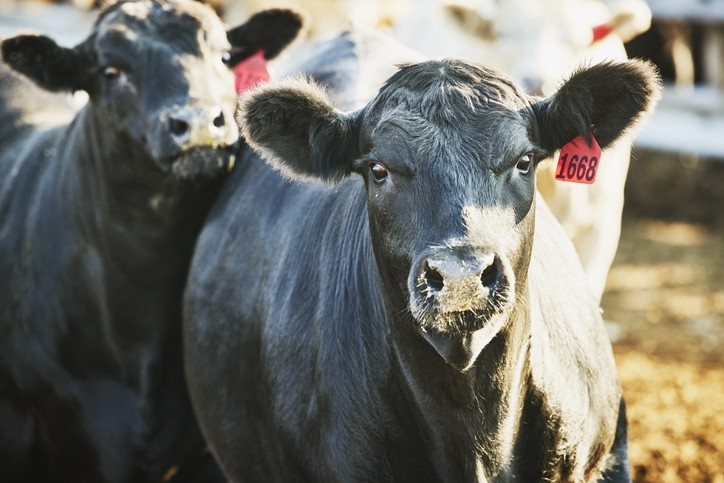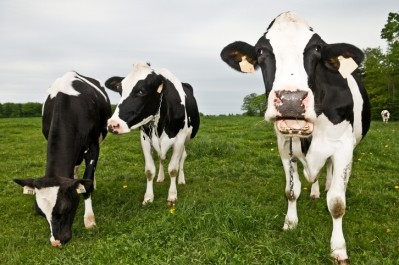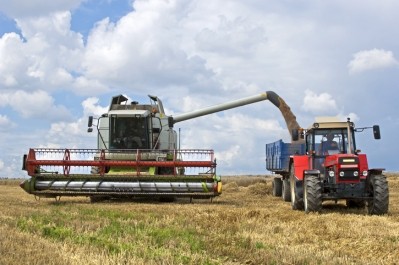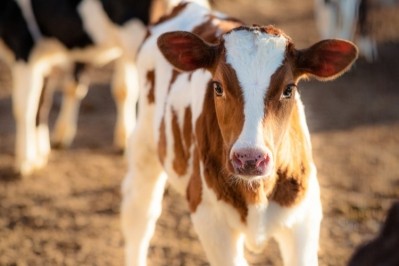Scientists ‘fill in the gaps’ on protein utilization by beef cattle

The team of scientists from Texas A&M AgriLife Extension, Texas A&M AgriLife Research, and USDA-ARS Bushland are not the first to evaluate the availability of the rumen undegradable protein fraction in feedstuffs - researchers have been investigating this for some time. But they are the first to do this for a wide range of feedstuffs, enabling the development of industry-applicable models that can help nutritionists and beef cattle producers make more informed decisions around protein nutrition.
“Previous research has focused on very specific feedstuffs. That isn’t a criticism of those experiments as they paved the way for our work. But what we set out to do was characterize the availability of the rumen undegradable protein fraction for a diverse group of 18 feedstuffs that are currently used to feed growing and finishing cattle in the Southern Great Plains and worldwide,” Jason Smith, associate professor and extension beef cattle specialist at Texas A&M AgriLife Extension, told FeedNavigator.
“We wanted to produce findings that would be useful not only in that feeding situation or for those ingredients; we wanted to paint a more comprehensive picture of nutrient composition and use the data we generated to develop prediction models that could be used to reliably estimate the rumen undegradable protein availability of many different feedstuffs,” he added.
Measuring metabolizable protein: a challenge in ruminants
‘Metabolizable protein’ is used by nutritionists and formulators as a measure of protein that is available for utilization by cattle. It includes both rumen undegradable protein, which bypasses the rumen fermentation process and moves into the small intestine unchanged, and microbial crude protein that is synthesized from the rumen degradable fraction. The problem, according to Smith, is that there are some knowledge gaps around the extent to which each of those fractions becomes metabolizable protein.
“In a nutshell, the rumen environment complicates estimation of metabolizable protein, and ultimately the supply of amino acids to the animal. Because rumen degradability is influenced by multiple factors, and influences the rumen undegradable protein fraction, it is not a simple as ‘what goes in must come out’. We are trying to better understand what comes out and how the animal can utilize that. We also want to use that information to predict what comes out,” explained Smith.
He said this was the “critical next step for beef cattle protein nutrition” and would allow for more “strategic decision making around protein nutrition”, whether formulating rations, making supplementation decisions, or purchasing ingredients.
Giving an example of how this knowledge could be beneficial in a feeding context, Smith said: “If a producer wants to optimize production costs, it may make sense to sacrifice some productivity if there is an associated net financial benefit that decreases cost of gain or cost of maintenance. To understand what happens if we feed an animal at, say, 90% of its metabolizable protein requirement, first we need a better understanding of how we actually provide an animal with 100% of its metabolizable protein content. We know what its requirements are; the gap is in fulfilling this requirement.”
More accurately estimating undegradable protein availability
The team’s initial focus was on the rumen undegradable protein fraction.
“We set out to understand what portion of the undegradable protein fraction is actually available to the animal,” said Smith.
The team’s experiments generated data which showed that currently accepted values for rumen undegradable protein, based on previous assumptions, are inadequate.
“In some situations, they under-estimate availability and in others they over-estimate availability. Either of these can be problematic,” said Smith.
“Unnecessarily over-feeding protein has no production benefits - it just increases nitrogen excretion which we know has environmental implications. Therefore, by meeting an animal’s protein requirements without over-feeding we are being better stewards of the environment and at the same time minimizing feed costs, because protein is expensive,” Smith explained.
Conversely, he said that if producers under-feed animals, there are consequences for performance, productivity, and efficiency.
The data generated by the experiments were used by the team to develop models that predict rumen undegradable protein availability.
“These models use standard nutrient values that are currently provided by most routine feed analyses,” said Smith.
Ultimately, the team hopes that nutritionists will incorporate the models into their ration formulation programs, and that analytical laboratories will use them to expand the information provided by routine feed analyses.
However, Smith said there are limitations that need to be addressed to extend application of the models across more feed sectors. For example, the researchers only evaluated relatively high-quality ingredients. Therefore, caution should be used when applying the model to grazing or hay-fed beef cattle that are consuming certain roughages, such as perennial warm-season grasses.
Estimating rumen protein degradability
The scientists’ work on characterizing the undegradable protein fraction has also taken them down a different path than they intended: that of estimating rumen protein degradability.
“In removing the water-soluble fraction to get to the undegradable fraction we learned that in many situations we are currently under-estimating rumen protein degradability,” said Smith.
“Historically the scientific community has operated on the assumption that 100% of that fraction is degradable in the rumen. We know that is incorrect - that is not a discovery of ours - but the current limitation is estimating or predicting what portion of the soluble fraction is rumen degradable.”
He explained that a disparity between rumen degradable protein and rumen fermentable carbohydrate supply will, in many cases, result in the excess protein being lost to the environment.
“If we overestimate rumen degradable protein supply and we don’t provide the microorganism with enough degradable protein, that changes the entire rumen fermentation process, so we potentially decrease overall digestibility by unknowingly underfeeding protein to the rumen,” he said.
“Likewise, if we underestimate rumen degradable protein supply, we potentially overfeed it, but also feed less rumen undegradable protein and potentially underfeed metabolizable protein as a result.”
Smith said there are economic and environmental consequences of either, which is why the team is working on ways of better estimating rumen protein degradability.
“There are a lot of different ways to do that. Currently none of them are perfect. We developed a model that we believe is an improvement on previous values, but it has its own limitations, so our focus now is to address those to hopefully arrive at even more reliable estimates of rumen protein degradability. That is where I see our work moving in the future.”












